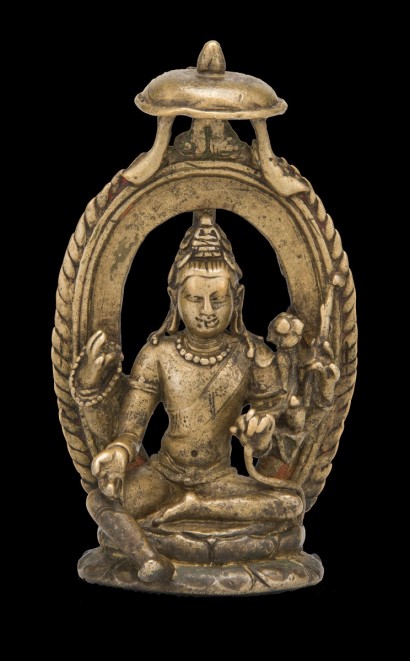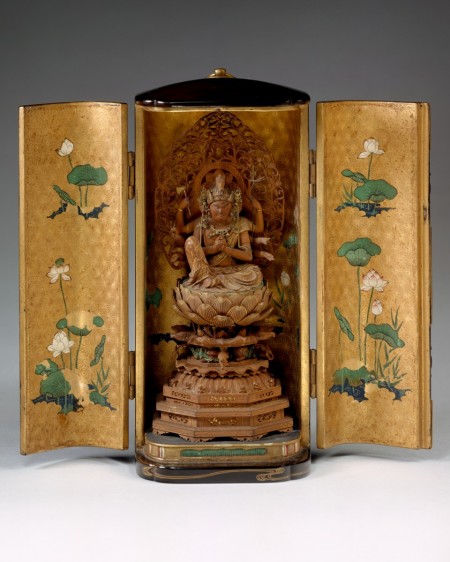India, Pala period, 9th century; copper alloy; 4 1/2 x 3 x 2 1/8 in.; long-term loan from the Nyingjei Lam Collection to The Rubin Museum of Art, New York, L2005.9.4.
Unsurprisingly—given the importance of pilgrimage in Japanese religion—miniature portable shrines became popular in that country, providing readily accessible icons for veneration. This example contains an exquisitely carved representation of Bato, or Horse-Headed Kannon, a fierce manifestation of the bodhisattva who served Japanese warrior society as the protector of animals, especially horses. Despite his grimace and war-like implements, Bato Kannon embodies the same beneficial intentions as all other manifestations of Avalokiteshvara. The gentle lotus imagery on the shrine doors suggests the underlying pure and compassionate nature of the icon contained within.





